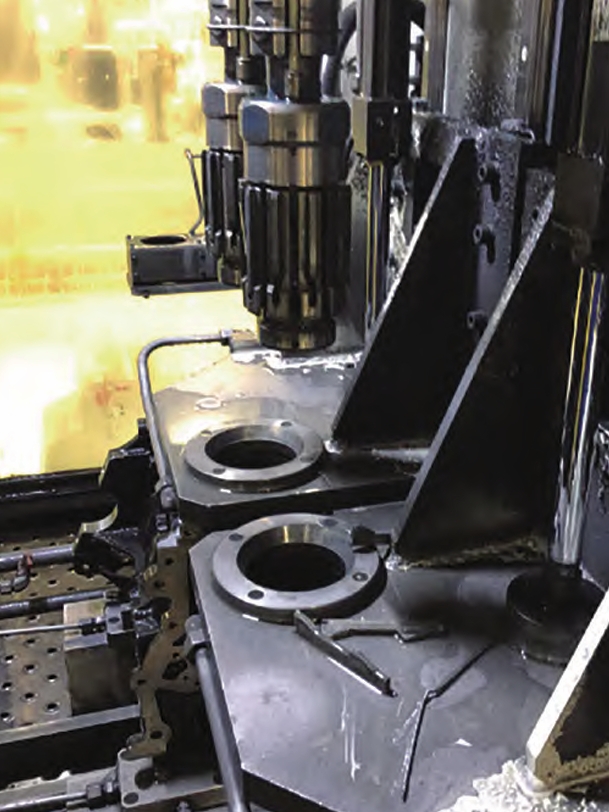In the production of heavy-section machine tool tray castings (typical dimensions: 800 mm × 800 mm × 200 mm), surface slag hole defects severely impact product quality and machining performance. This article systematically analyzes defect formation mechanisms and proposes optimized solutions through gating system redesign, process parameter adjustments, and coating improvements.
1. Mechanism of Slag Hole Formation
Slag hole defects primarily originate from two sources:
$$
\text{Total Slag Content} = \alpha C_{\text{ox}} + \beta C_{\text{sul}} + \gamma C_{\text{sand}}
$$
Where:
α = Oxidation coefficient (0.15-0.25)
β = Sulfur reaction coefficient (0.08-0.12)
γ = Sand inclusion factor (0.05-0.10)

2. Critical Process Parameters
| Parameter | Original | Optimized |
|---|---|---|
| Pouring Temperature (°C) | 1380-1400 | 1350-1370 |
| Gating Ratio (ΣSrunner:ΣSgate:ΣSsprue) | 1:1.8:1.2 | 1:0.75:0.47 |
| Filtration Efficiency (%) | 62 | 89 |
| Coating Thickness (μm) | 300-400 | 500-600 |
3. Gating System Optimization
The redesigned open gating system demonstrates superior performance:
$$
Re = \frac{\rho v D}{\mu} < 2300 \quad \text{(Laminar Flow Condition)}
$$
Key modifications include:
- Runner cross-section increased by 40%
- Filter capacity enhanced from 20 PPI to 15 PPI
- Pouring time extended from 28s to 42s
4. Coating System Enhancement
The optimized coating formula shows remarkable sulfur resistance:
| Component | Content (wt%) | Function |
|---|---|---|
| Zircon Flour | 52 | High refractoriness |
| Bentonite | 8 | Adhesion improvement |
| SiO2 Nano-particles | 5 | Surface densification |
| Anti-oxidant Additives | 3 | Slag formation suppression |
5. Defect Reduction Results
Process improvements achieved significant quality enhancement:
$$
D_{\text{slag}} = k \sqrt{\frac{\mu t}{\rho}} \quad \text{(Slag Particle Growth Model)}
$$
| Quality Indicator | Before | After | Improvement |
|---|---|---|---|
| Surface Defect Density (defects/m²) | 18.7 | 2.3 | 87.7% |
| Machining Rejection Rate (%) | 23 | 3 | 86.9% |
| Casting Yield (%) | 68 | 82 | 14%↑ |
6. Process Control Recommendations
For sustainable casting defect prevention:
- Maintain molten metal oxidation index below 0.25
- Control sand sulfur content ≤ 0.15%
- Implement real-time pouring temperature monitoring
- Establish coating viscosity control range (45-55 s, Zahn Cup #4)
This comprehensive approach effectively addresses slag-related casting defects in heavy-section castings through systematic process optimization and advanced material engineering, providing valuable guidance for similar casting defect prevention challenges.
